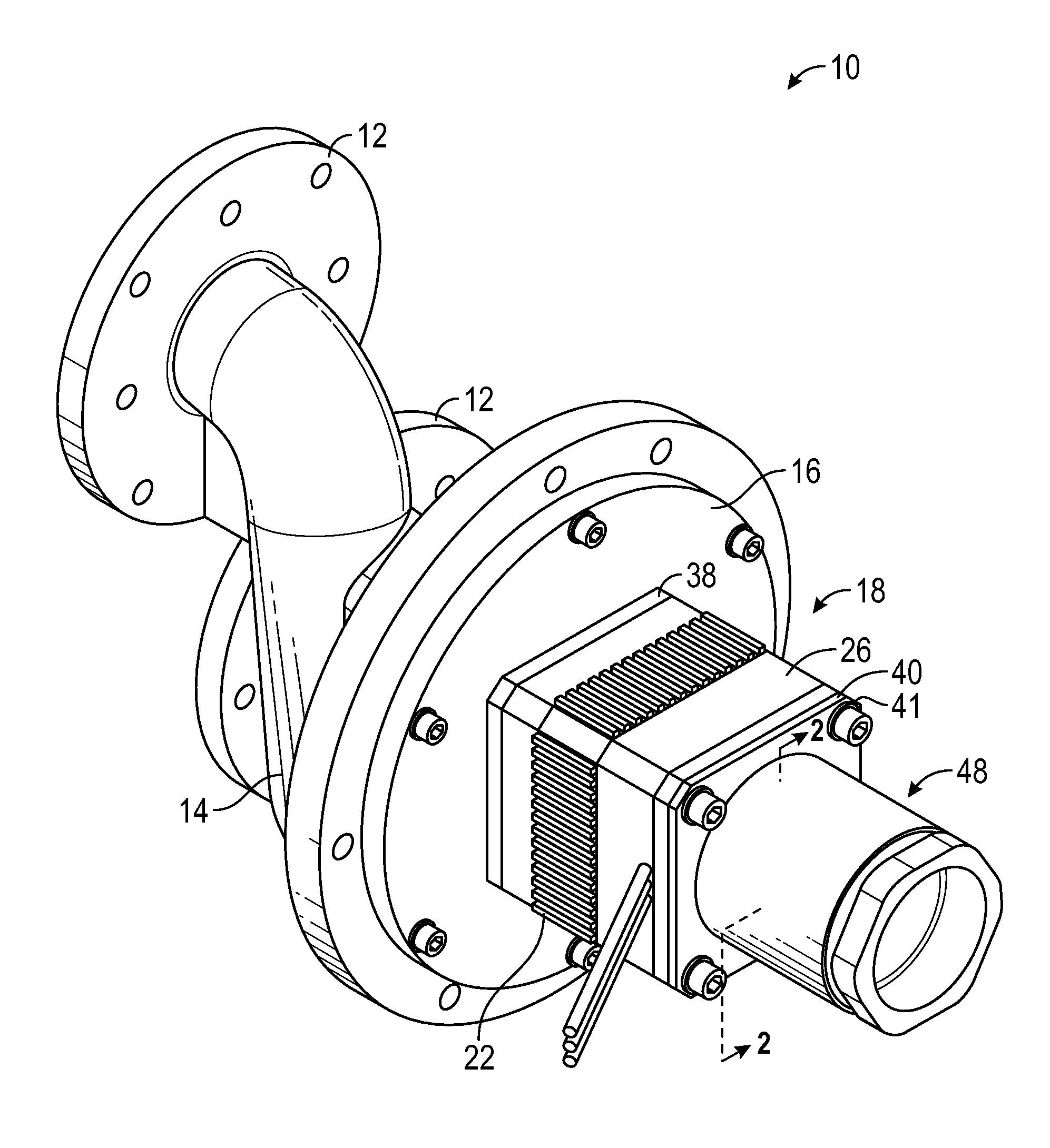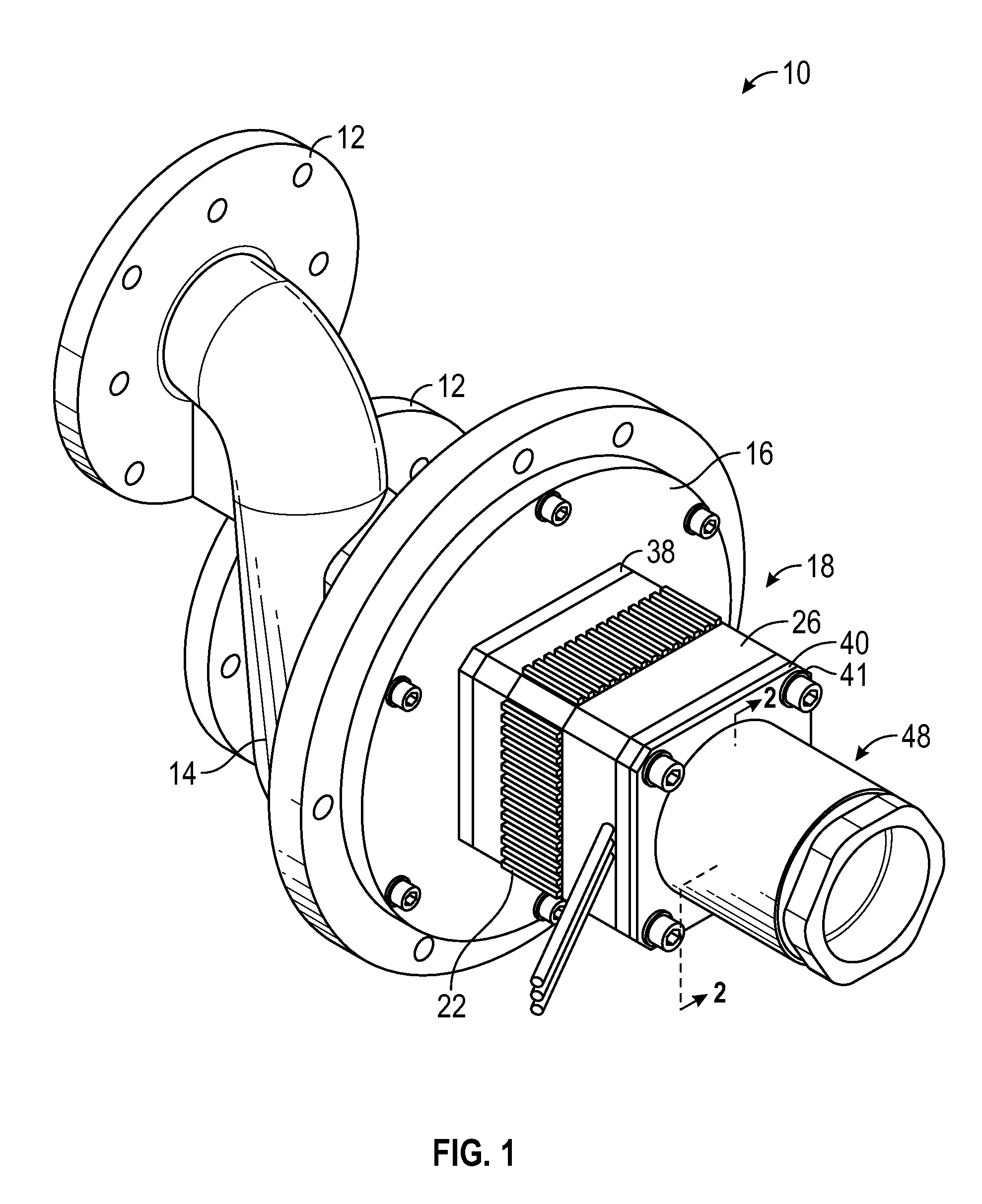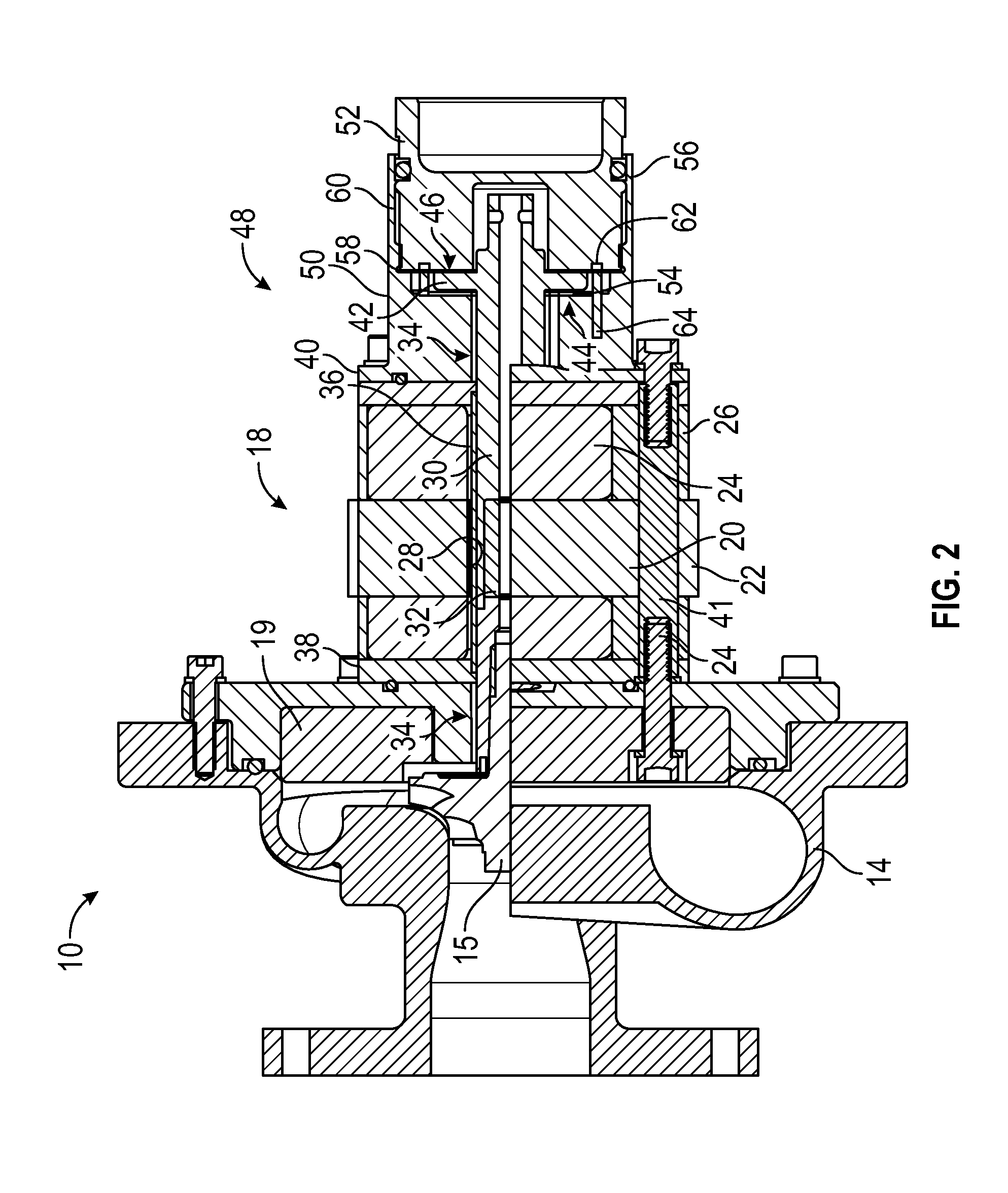Foil bearing supported motor with housingless stator
a technology of motor stator and bearing, which is applied in the direction of supporting/enclosing/casing, reactant parameter control, dynamo-electric machines, etc., can solve the problems of low speed of conventional bearings, damage to the motor stator, and large size of ball bearings and sleeves, so as to save energy and facilitate flanges , the effect of saving energy
- Summary
- Abstract
- Description
- Claims
- Application Information
AI Technical Summary
Benefits of technology
Problems solved by technology
Method used
Image
Examples
Embodiment Construction
[0020]Embodiments of the invention are shown in the drawings and are described as relating to a typical application of fuel cell fuel or air delivery (either stationary or mobile). Other applications of the invention, however, may include, for example: aeration units, printing systems, and air knives. The machine can be mounted in a vertical or horizontal direction.
[0021]An isometric view of the blower 10 is shown in FIG. 1; FIG. 2 shows internal parts of the blower 10 in a cross-sectional view. In certain embodiments, flanges 12 that connect to a customers system are integrated into a volute 14 of the blower so as to reduce part number and decrease leaks of the process gas. The volute 14 houses an impeller 15, and supports a journal bearing sleeve 16, e.g., by way of cap screws. From the journal bearing sleeve 16 a motor, including a stator 18, is supported by way of hollow rods 41. The volute also may house a vaneless diffuser 19, through which the hollow rods 14 can be bolted; al...
PUM
 Login to View More
Login to View More Abstract
Description
Claims
Application Information
 Login to View More
Login to View More - R&D
- Intellectual Property
- Life Sciences
- Materials
- Tech Scout
- Unparalleled Data Quality
- Higher Quality Content
- 60% Fewer Hallucinations
Browse by: Latest US Patents, China's latest patents, Technical Efficacy Thesaurus, Application Domain, Technology Topic, Popular Technical Reports.
© 2025 PatSnap. All rights reserved.Legal|Privacy policy|Modern Slavery Act Transparency Statement|Sitemap|About US| Contact US: help@patsnap.com



